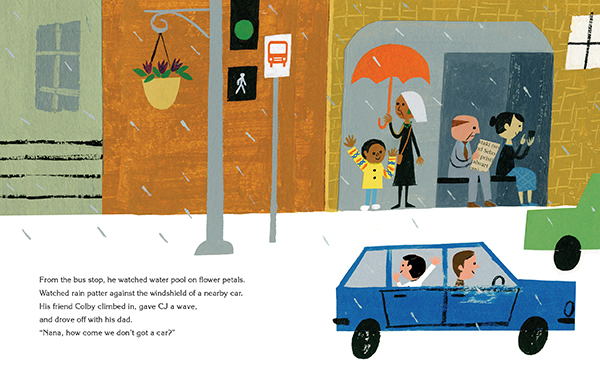Fans of the award-winning Open This Little Book will be drawn to the exuberant Inside This Book by author-illustrator Barney Saltzberg. It’s a testament to the robust imagination of children, as well as the very notion of self-publishing.
A boy named Seymour has written a story that is printed on smaller pages within the book that readers hold in their hands. Seymour’s story is all about how his mother created for him and his siblings some books with blank pages. Seymour watches the world around him and fills his book with stories and observations. Next up, printed on even smaller pages, is his sister Fiona’s story. Dominated by purples, it is filled with art and poetry, her two favorite things. She also shares a poem she’s written about her dog before she runs out of room. Finally, their youngest sibling, Wilbur, shares his book on even smaller paper. It’s illustrated in what appears to be crayon, and the sentences are simple: “This is me. This is my family.”
There’s a lot of joy and humor here, and Wilbur gets the biggest laugh with his “This is a dinosaur and my family!” spread, showing a hungry dinosaur chasing the family. Saltzberg uses bold and colorful fonts, and each story reflects the personality and age level of its author in very entertaining ways.
Seymour wraps things up by showing how the family decided to put all their stories together into . . . well, Saltzberg’s book. “Because books are better when they are shared.” And this remarkably child-centered book is one you’ll definitely want to share.
This article was originally published in the April 2015 issue of BookPage. Download the entire issue for the Kindle or Nook.





















